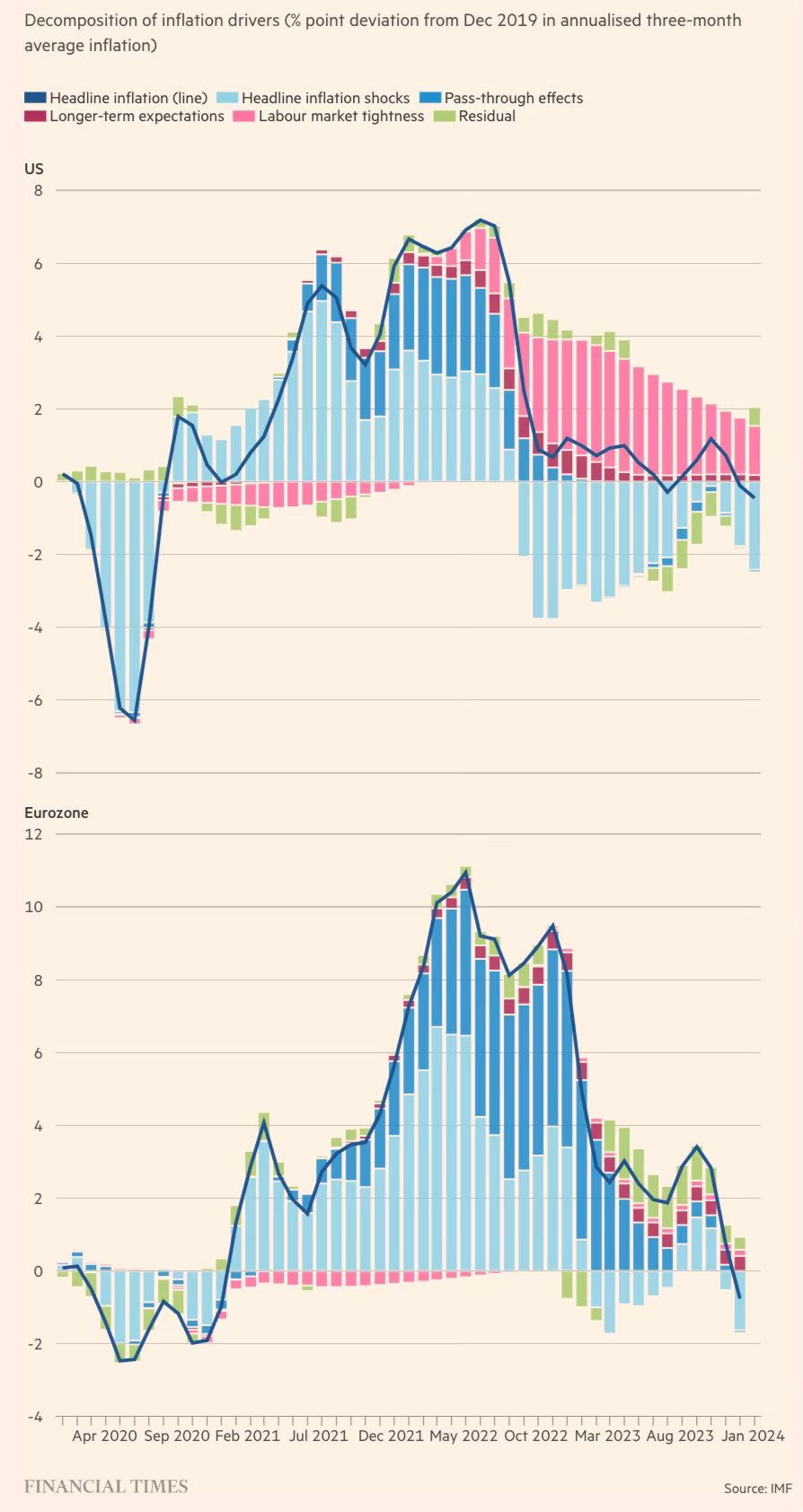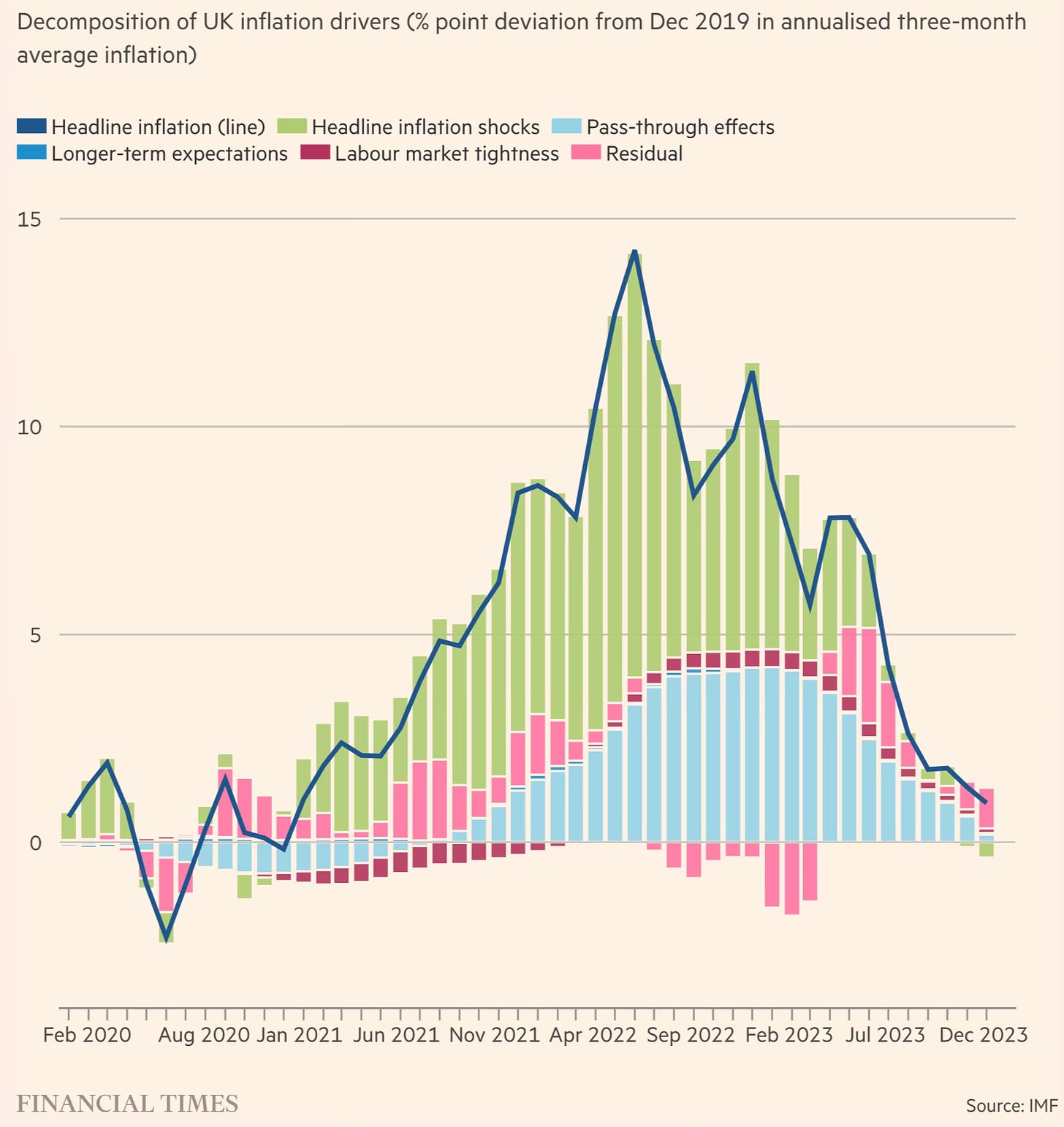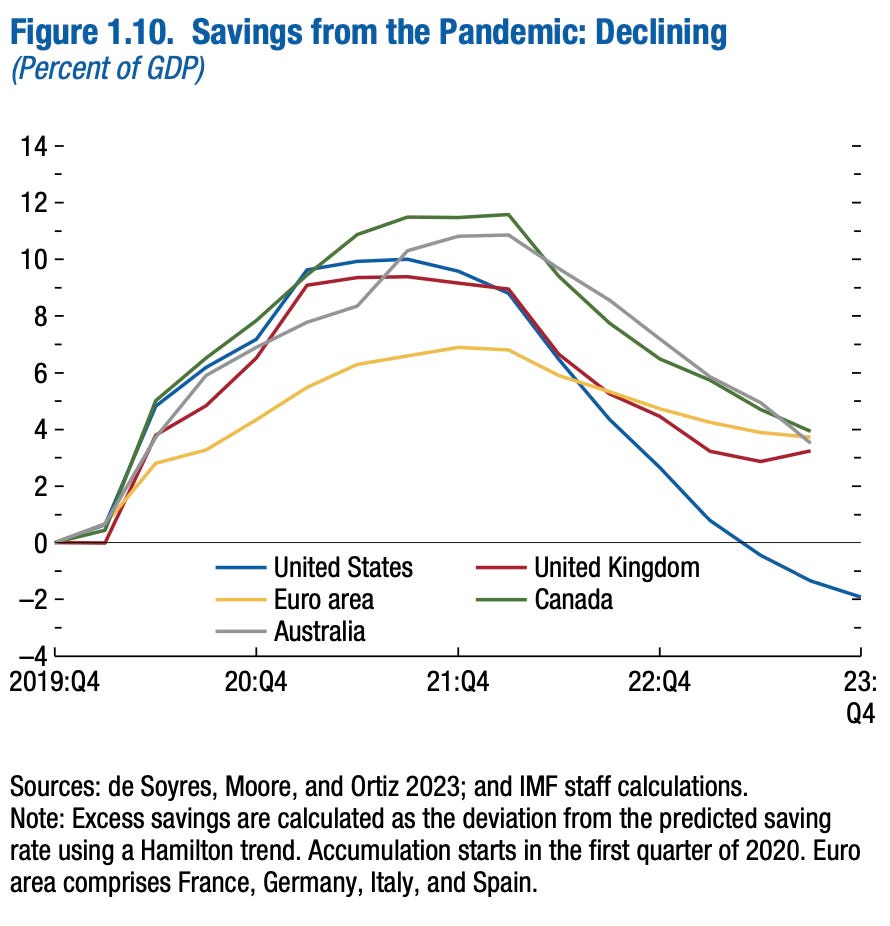1. Ruchir Sharma points to the attractions of investing in China.
China now has more than 250 companies with a market cap of over $1bn and a free cash-flow yield of more than 10 per cent; the US has fewer than 150. Of those 250-odd China stocks, all but about 20 are in sectors other than tech, led by industrial and consumer discretionary businesses, so the opportunities are not just in the internet and AI... But by some measures, capitalism with Chinese characteristics is more competitive than its US rival. Large caps account for a smaller share of listed companies in China, leaving more room for newcomers. Among the 11 leading sectors, seven are less concentrated in China than in the US, meaning the top five businesses constitute a smaller share of each sector’s market cap. China’s tech sector is much less concentrated, which means a private upstart such as DeepSeek could rise in an environment less dominated by giants.
2. Interesting that amidst all talks of green transition in the US under Biden, the country continued to increase oil and gas extraction at an increased pace since 2016.
4. Microsoft announces a breakthrough in quantum computing by unveiling Majorana 1, the world's first quantum chip powered by a topological core architecture.
Microsoft’s ability to exploit a new kind of matter to create a new type of qubit (or quantum bit) promises to accelerate the development of reliable large-scale quantum computing... It’s kind of a generational technology like moving from vacuum tubes to a semiconductor. The advantages of Microsoft’s topological qubits are that they are fast and digitally controlled. That should enable them to scale more reliably to the 1mn qubit threshold that researchers consider necessary for sophisticated quantum computation. But it will still take years of experimental engineering before the company can deploy its quantum processing units (QPUs) in data centres alongside the classical graphics processing units (GPUs) that are currently powering the AI revolution. Nevertheless, the company still hopes to build a utility-scale quantum computer by the end of the decade configured to tackle a set of problems that no classical computer can address. By exploiting the special properties of a quantum computer, Zander reckons researchers will be able to develop new catalysts to break down microplastics, enhance the fertility of soils or develop new forms of self-healing concrete, for example.
A summary of the latest on quantum computing chip development - Google's Willow, IBM's Heron, Microsoft's Majorana 1, Amazon's Ocelot, and others. It's estimated that we are 15-30 years from any commercial chip deployment.
5. In a paradigm breaking shift from its more than two decades of fiscal conservatism, Germany looks set to amend its 'debt brake'
Chancellor-in-waiting Friedrich Merz late on Tuesday agreed with the rival Social Democrats (SPD) to exempt defence spending above 1 per cent of GDP from Germany’s strict constitutional borrowing limit, set up a €500bn off-balance sheet vehicle for debt-funded infrastructure investment and loosen debt rules for states. Deutsche Bank economists described the deal as “one of the most historic paradigm shifts in German postwar history”, adding that both the “speed at which this is happening and the magnitude of the prospective fiscal expansion is reminiscent of German reunification”.
The plan is expected to open €1tn of additional borrowing over the next decade, more than a fifth of the country's GDP, for defence and infrastructure spending. Given its far lower debt to GDP ratio of 63%, Germany fortunately has enough fiscal space to accommodate such spending which is expected to rise to 84% over the decade. It has precedents in so far as similar spending spike happened in the aftermath of the reunification and boosted economic growth in the nineties.
At the core of the problem has been a “debt brake”, written into Germany’s constitution in 2009 at the peak of the global financial crisis, that limited the government’s capacity to take on new debt to 0.35 per cent of GDP — one of the most stringent anti-borrowing laws in history. Much of the fiscal space that did exist was spent on the welfare state and social benefits. Merz’s plans bypass the debt brake by enabling the exclusion of everything over 1 per cent of GDP spent on defence. Goldman Sachs anticipates that the plan will drive German defence spending to as much as 3.5 per cent of GDP by 2027 — up from 2.1 per cent in 2024 and a mere 1.5 per cent in earlier years... Even with a debt-to-GDP ratio of around 84 per cent, German public leverage would be “still pretty favourable” compared with most peers, said Cyrus de la Rubia, chief economist at Hamburg Commercial Bank, pointing to ratios of 115 per cent in France and 124 per cent in the US.
The markets reacted in all the positive ways to the announcement.
Markets are applauding. As a Kiel Institute policy brief notes, the increase in German borrowing costs after the announcement was accompanied by rising stock prices, an appreciating euro, a steeper yield curve and stable default insurance — all pointing to improved growth expectations.
6. It's a measure of the unprecedented global power wielded by Donald Trump that his tirade against Chinese ownership of Panama Canal has led to the Hong Kong based CK Hutchison has decided to sell its ownership of two ports at either end of the Panama Canal to BlackRock. The deal involves the takeover of 43 ports, including the two, by a consortium headed by BlackRock and includes Global Infrastructure Partners (the private infrastructure investment company purchased by BlackRock last year), port operator Terminal Investment Ltd (TIL), and the world's biggest container shipping line, Mediterranean Shipping Company (MSC).
Amazon’s fulfilment centre in Shreveport, Louisiana — its most technologically advanced warehouse — has demonstrated the type of savings it can achieve with automation. The 3mn sq ft facility, which opened in September, uses robots at every stage of fulfilment and has achieved a 25 per cent cut in costs, according to Amazon, following a tenfold increase in robotics compared with its previous generation of warehouses... Shreveport features a range of mobile drive units, which are used to carry items across the warehouse, and advanced robotic arms that pick and sort items, cutting down on the number of human workers in the warehouse. The tech giant is also investing in robotics talent as part of a wider push to deploy AI large language models in its warehouse robots...While its retail business continues to be profitable, Amazon has forecast more modest growth across the group in the first quarter of this year, with a strong dollar knocking revenues. The US ecommerce group is pushing to lower delivery times, particularly for users of its Prime subscription service. This includes separating its logistics network into specific regions to ensure inventory is in place for same day deliveries... The group has deployed more than 750,000 mobile drive units since it acquired robotic start-up Kiva Systems in 2012. In recent years it has introduced Proteus, a fully autonomous lift vehicle that navigates sites independently using a set of sensors having been trained using AI. The company has also partnered with chipmaker Nvidia to develop “digital twins” of its warehouses to enable it to run thousands of simulated situations before deploying an autonomous robot.
9. Bjorn Lomborg interview in FT. He appears to have 12 hanging fruits, drawn from deep research evidence, that would cost $35 bn to add $1.1 trillion to developing world output and save 4.2 million lives a year.
His favoured educational reform, for example, is to improve outcomes in countries such as Malawi by teaching children according to their level, not their age. Many children, crammed into massive classes, fall hopelessly behind. Lomborg’s solution is to teach for one hour a day using tablets with adaptive software, giving children the benefit of a good curriculum delivered at their own pace. Implementing it, according to his think-tank, would cost $9.8bn and deliver a $604bn boost to income through better-educated children. “This is spinach for the world. I want people to know about it.”
Ahem!
10. Donald Trump, Elon Musk, neo-colonialism, and corruption.
Foreign companies operating in South Africa have to navigate Broad-Based Black Economic Empowerment (B-BBEE) regulations set by the Department of Trade, Industry and Competition, and in the case of certain multinationals, such as auto manufacturers, where ownership quotas can’t be applied, “equity-equivalent” programs require investments that drive Black participation in supply chains to meet empowerment targets. This doesn’t apply in the case of communications companies, though, which need to be 30% owned by “previously disadvantaged” people to qualify for a license.Musk wants to launch his Starlink satellite-communications service in South Africa, but that requires him finding an equity partner for a South African operation to qualify for a license. “Change the laws,” Musk is said to have repeatedly told Ramaphosa during a Feb. 3 meeting. On Feb. 5, Musk’s SpaceX (representing Starlink) withdrew from the Independent Communications Authority of South Africa’s hearings into a proposed licensing framework for satellite services. Trump’s executive order blasting South Africa came two days later... Donald Trump’s Feb. 7 executive order decried the “egregious actions of the Republic of South Africa,” claiming its 2024 Expropriation Act, which allows the state to seize land without compensation in certain scenarios, has been used to dispossess White people of their property.
11. The best illustration that America is now a country of rule by law, where law is that decided by the President and his cronies, comes from the decision to cull USAID programs.
In Afghanistan, women’s education programmes shut down. Health services were suspended for refugees from Myanmar taking shelter in camps in Thailand. In Colombia, anti-narcotrafficking helicopters were suddenly idle. But African countries were hit particularly hard. In Uganda, medical trials were halted. Life-saving medicines are gathering dust in warehouses in Malawi, where more than half of healthcare spending is dependent on US and foreign aid. Perhaps greatest of all has been the impact on the decades-long battle to end the Aids pandemic... The President’s Emergency Plan for Aids Relief, known as Pepfar, screeched to a halt. Launched by George W Bush in 2003, a year in which Aids killed more than three million people, the multibillion-dollar health initiative is based on a simple premise that everybody deserves access to antiretrovirals that suppress the spread of HIV... The initiative changed the trajectory of the Aids pandemic. To date, Pepfar has saved more than 26 million lives and prevented roughly 1,000 babies a day from being born with the HIV virus. Pregnant women can avoid passing on the virus to their babies by taking medications that either suppress their own viral load to undetectable levels, or pass through the placenta to the baby’s body...
Mitchell Warren, the executive director of the Aids Vaccine Advocacy Coalition (Avac), a New York-based campaigning group, called Pepfar “inarguably the best investment ever in global health and development”. “We took 20 years to build up what has taken less than four weeks to dismantle,” he said, reflecting on the chaos caused by Trump’s move... Within days, the 340,000 global healthcare workers whose salaries depend on the Pepfar programme — doctors, nurses, lab assistants and community outreach workers — received “stop-work orders”. More than 20 million HIV-positive people like Samkelo no longer knew when their next dose of antiretrovirals would come. Already, since January 24, at least 15,000 premature deaths have occurred because of the funding gap, according to a Pepfar tracker set up to monitor the impact.
The surest sign of the phasing out of Rule of Law and phasing in of Rule by Law comes when one hears news like this.
Congressional Republicans, egged on by Elon Musk and other top allies of President Trump, are escalating calls to remove federal judges who stand in the way of administration efforts to overhaul the government. The outcry is threatening yet another assault on the constitutional guardrails that constrain the executive branch... “The only way to restore rule of the people in America is to impeach judges,” Mr. Musk wrote this week on X, his social media platform, in one of multiple posts demanding that uncooperative federal judges be ousted from their lifetime seats on the bench.
12. Two maps that convey the striking reversal of global trade leadership between the US and China.
After nearly a decade of trying, Apple finally gave up its effort to produce an electric car last year, canceling a project that soaked up $10 billion. But last year in China, the electronics maker Xiaomi launched its first electric car after just three years of development and delivered 135,000 vehicles. It has vowed to double that number in 2025. Xiaomi’s ability to succeed where Apple could not shows how thoroughly China has come to dominate the supply chain for electric vehicles. Chinese companies have mastered electric vehicle manufacturing. By tapping that infrastructure, Xiaomi was able to get components quickly and cheaply. More Chinese electric vehicle companies — including Leapmotor, Li Auto and Seres Group — are starting to turn a profit after burning cash for years in their intense competition for the world’s largest auto market... The telecommunications giant Huawei, which the U.S. government has targeted with sanctions and legal action for years, is making autonomous driving software. Huawei has teamed up with multiple Chinese automakers, including Seres Group and the state-owned firms SAIC Motor, BAIC and Chery.
14. Two striking graphics about the masculinisation of the US society. First on gender roles.
The second on society becoming too feminine.Beijing has targeted five metals: tungsten, tellurium, bismuth, molybdenum and indium. China is the biggest producer of all of them...My calculations suggest the US spends about $300 million importing tungsten; roughly $30 million on bismuth; about $90 million on indium; and less than $1 million on tellurium. The total annual cost for all four comes to less than $500 million... it’s the same trend as the one observed in the much-hyped rare earth elements sector. Fears abound, but the cost of importing the 17 metals that form that category is tiny. The US Geological Survey calculated rare earth imports at less than $200 million in 2023...The import bill of minor metals could increase by five, 10, 20, even 50 times, and not amount to more than a rounding error for the US economy. Prices, however, are lower today than they were a decade ago. Did you notice when they were high? Nope; for a reason. Indium, for example, traded as high as $800 per kilogram in 2011; it’s now at $345. The cost of the most common compound of tungsten, one of the much-hyped critical minerals, is trading 25% below its 2011 peak. Even if prices rise because of Chinese restrictions, recycling will increase, American engineers will work to reduce their use and alternatives will be found. High prices cure high prices.
This is a good primer on rare earth minerals and their refining (where, in particular, China has a 30 year headstart advantage).
16. Some facts on employment increase in the Government of India, which rose 4% from 3.17 mn to 3.3 mn from March 2022 to March 2024.
But what contributed to the rise in the civilian staff strength in the last three years? Note that over 86 per cent of the total civilian staff is accounted for by just four heads — Indian Railways, posts, central police forces, and tax departments... And even as the overall civilian staff strength has risen by over 489,000 in the last three years, the Indian Railways has seen a small increase during the same periods—about 3,000 employees. Of the four heads, the postal department and the police saw the largest increase by over 179,000 and 143,000, respectively, in the last three years. The two tax departments (overseeing direct and indirect taxes) have seen an increase in their staff strength by over 71,000, bringing their total strength to over 172,000.
17. As defence spending rises globally, it may be end of the peace dividend.





















